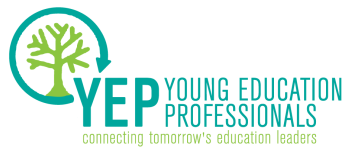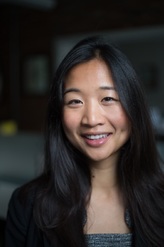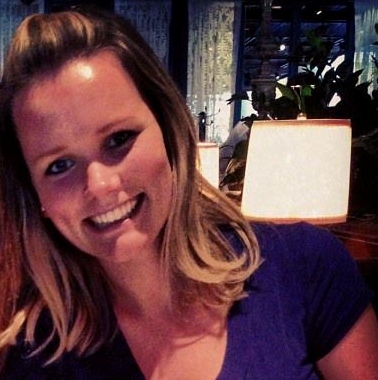D.C. leaders have tried a number of solutions to address these challenges. The schools’ chancellors have tried firing principals and enlisting the help of partners such as Reading Corps. Mayor Bowser even passed out copies of President Barack Obama’s book, The Audacity of Hope, and held live Google Hangouts with students who have read the book. Now, Chancellor Kaya Henderson is trying something new: the “Empowering Males of Color Initiative.” The initiative is looking to “enhance the student experience, increase achievement, and prepare our males of color for college, careers, and life beyond DCPS.” The three main strategies of this initiative are:
- Mentoring through literacy: Improve literacy by enlisting trained mentors to help struggling Black and Latino readers.
- Proving what’s possible: Improve academic and social outcomes for boys and young men of color by collaborating with schools to provide funding for multi-year grants, and yearly mini-grants that will be used to develop initiatives that will improve outcomes for Black and Latino boys.
- An all-male college preparatory high school: Open a high school dedicated to guiding male students toward graduation and college.
Our schools have a deficit of male teachers, and the deficit for male teachers of color is even higher. Research from MenTeach found that nationally in 2014, only 19.1% of teachers in elementary and middle schools were men. In secondary schools, where 43% of teachers were men, only 10% of teachers were African American (male and female). Urban Prep Academies hopes to turn these numbers around and will strive to provide their students with a variety of male role models.
Can this model work in D.C.? Darryl Wiggins, owner of DigiDoc Incorporated and campaign chairman for D.C. officials such as Brandon Todd and Muriel Bowser, seems to think so. Mr. Wiggins is one of those helping to secure the funds to open this school in the fall of 2016. It will open with just one class of freshmen, and then welcome a subsequent freshman class every year until there are four full classes of freshman, sophomores, juniors, and seniors.
Mr. Wiggins says an all-male college preparatory school will address what the community of color struggles with: male role models. He believes that boys need a male presence to model and to encourage self-actualization. Research supports this assertion. A U.S. Department of Health and Human Services report called “The Importance of Fathers in the Healthy Development of Children” states that children with involved, caring fathers have better academic outcomes. They come to school more patient and are able to handle the frustrations and stresses associated with schooling more readily than children with less-involved fathers. Furthermore, children with involved fathers are more likely to be emotionally secure, confident to explore their surroundings, and have better social connections with peers. They are also less likely to get in trouble at home, school, or in the neighborhood.
While this new school obviously will not be giving every student a father, and undoubtedly, many of the students will already have their own involved fathers, an all-male college preparatory school fills in the gap of male role models for these students. The school will be operated by men of color on the fundamental premise of “what I see, I can become.”
According to Mr. Wiggins, there is no pushback against this school from his community, as they have been desperately searching for a solution such as this: one that will target the incredibly complex needs of their children. As it stands, there is quite a gap in equity between Washington, D.C. schools. Schools like Janney and Eaton Elementary Schools have active and wealthier parents who are able to give their students’ schools additional resources. When Mr. Wiggins’ own child was a student at Janney, the school asked him to make a donation of $10,000 for a silent auction. We already know that Janney is in the top five performing schools in DCPS. And undoubtedly, a lot of that performance is helped along by families that have the wealth to support their children’s school. Schools in poorer parts of the city do not have this valuable cushion. Mr. Wiggins hopes that this new school will allow D.C.’s marginalized students to have the same access to resources that the District’s wealthier students have access to.
Undoubtedly, a solution such as this is not without controversy. Some feel that only focusing on minority boys ignores the needs of minority girls. D.C. Councilmember Mary Cheh asserts that if a plan such as this is to work, Urban Prep Academies needs to show “there is no gender-neutral way” to help close the achievement gap in Washington, D.C. Others point out the inconsistencies of results of some of the Urban Prep Academies. Some reports show that only 9% of the charter’s students were ready for college and only 26% showed proficiency on state tests. Additionally, there is no research yet on how these boys actually fare once in college. Critics ask -- Do they stay? Do they finish in four years? Do they finish at all?
While I think that this solution is a viable one for our boys of color in D.C., DCPS would do well to learn from some of the downfalls that Urban Prep Academies has experienced. Teachers need to be paid well (as Urban Prep Academy will be part of DCPS, these teachers will benefit from higher pays underperformance-based evaluation programs like IMPACT and LIFT), the school’s use of money needs to be transparent, and most importantly, the school needs to show growth. I am hopeful that DCPS can learn from these lessons and successfully improve the lives of young boys of color across the District.
If you want to become involved in this new initiative, you can sign up to become a mentor or donate to the cause.
Amara Pinnock is an elementary school teacher in DC. Reach her via email or Twitter.



 RSS Feed
RSS Feed